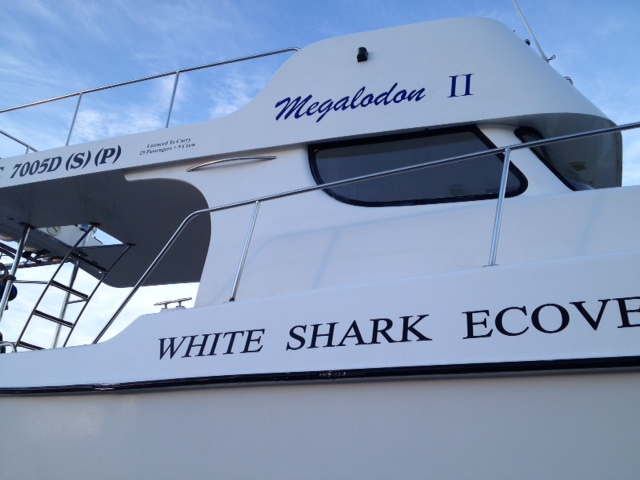Robben Island and Shark Cage Diving
We spent this weekend doing two activities that the Cape Town winter weather has kept us from during our whole stay: a visit to Robben Island and Shark Cage Diving. Admittedly, the former has much more historical significance, but we were eager to do both, nonetheless.
On Saturday, we went to the Victoria and Albert (V&A) waterfront and caught the Robben Island ferry. After a thirty minute ride, we arrived on the island where we were whisked into a bus. The bus then took us around the island to various historical sites. Our guide was an actual resident of the island and in addition to explaining the past of the island, he was happy to tell us about the island’s present and its small community. For example, he shared that many residents were former political prisoners or prison guards. By living together as a community, he said, it is like a microcosm that shows the reconciliation and rebuilding process of South Africa. He also said that one of the major projects going on today on the island is the identification of remains so that families of prisoners can finally claim them and give them a proper burial. On a lighter note, he also shared his children and the other children on the island must take the ferry to Cape Town each day for school, and so on the days it is stormy, they will have “storm days.” Once, he said, the sea was so choppy for a week that they had the entire week off of school.
Robben Island Entrance: Freedom Cannot Be Manacled!

Prison Gate
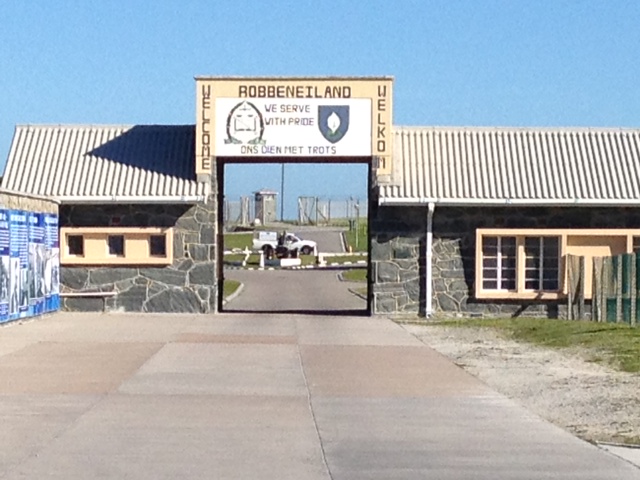
The first stop on our tour was to Robert Sobukwe’s house. Sobukwe was a political prisoner on Robben Island because of his anti-apartheid activities. He believed that South Africa and its politics should be controlled by Black South Africans, and was therefore broke away from the more multi-racial African National Congress (ANC) party that many anti-apartheid South Africans supported. Therefore, he and several other ANC members broke away the ANC and founded the Pan-Africanist Congress (PAC). In 1960, with the PAC, Sobukwe led a protest of the pass laws, which required all non-whites to carry a pass book that showed what areas of the country or even the town they were allowed to pass through. If found without their pass books, a non-white person could be taken directly to prison. On the eve of the protest, Sobukwe decided to give himself up to police, in hopes that it would inspire other Black South Africans to join the protest. On his walk to the police station, many small groups of men joined him until the crowd swelled to about 5,000 people. Most, including Sobukwe, were arrested under sedition charges when they reached the Sharpeville Police Station, but the police also opened fired, killing almost seventy people and injuring almost two hundred others. This incident later became known as the “Sharpeville Massacre.” After the massacre, he was sentenced to three years in prison for inciting Africans to demand the repeal of the pass laws, which he served. At the end of this sentence, Parliament enacted a “Gerneal Law Amenedment Act” with a clause known as the “Sobukwe Clause,” specifically targeting him. It allowed the Minister of Justice to extend the detention of any political prisoner indefinitely, which the minister promptly did for Sobukwe. After this, Sobukwe was moved to Robben Island where he was held for six years in this house away from the other prisoners. Our guide explained that it was not for special treatment, but to prevent Sobukwe from using his leadership skills to organize other prisoners against the guards. In addition, this type of isolation is very unnatural for people and often traumatic.
Robert Sobukwe's House
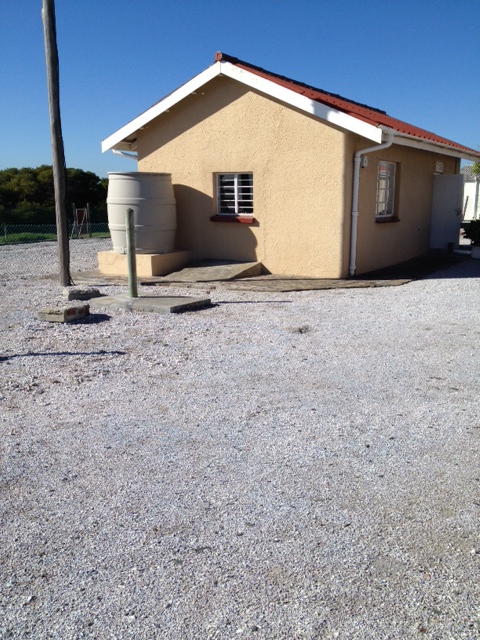
Letters from Robert Sobukwe's Wife
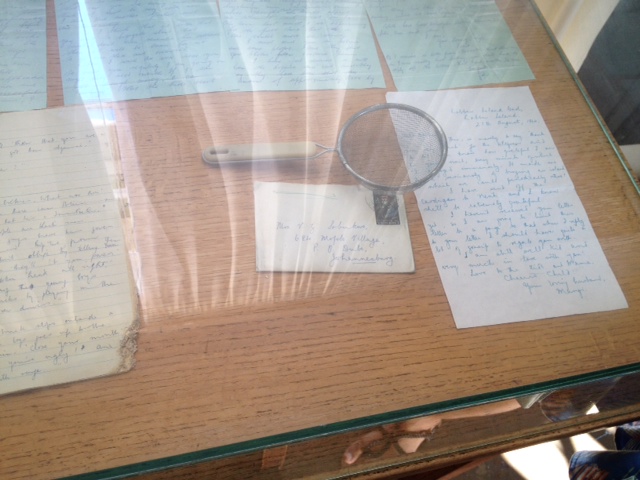
After seeing the tiny Sobukwe house, we were saw one of Robben Island’s guns. Our guide explained that during WWII, South Africa was afraid of an attack by German forces, so they fortified the island in hopes of defending Cape Town. However, this ended up being an unnecessary precaution as the fighting never came that far south. Next, we drove past a large graveyard that our guide explained was used during the pre-prison days when Robben Island was a leper colony. After that, we were taken to the lime quarry where political prisoners like Walter Sisulu, Ahmed “Kathy” Kathrada, and of course, Nelson Mandela, were forced do the back-breaking work of breaking lime stone into gravel. However, these prisoners also made the best of the horrible situation, by turning the quarry into a sort of university where they educated younger prisoners. Some of these prisoners, for example, were illiterate, so older prisoners would write in the lime dust to teach them how to read or write. In addition, these older prisoners hoped to pass the political legacy and knowledge down to the younger generation so as to ensure that the anti-apartheid movement continued in the future. In fact, our guide said that Nelson Mandela claimed that a rough outline of South Africa’s current constitution was developed here in the lime quarry’s cave. The pile of stones pictured was not in place during the mining days, but was added in 1995 during a reunion of former prisoners. Nelson Mandela laid the first stone, and the former prisoners followed suit.
Lime Quarry
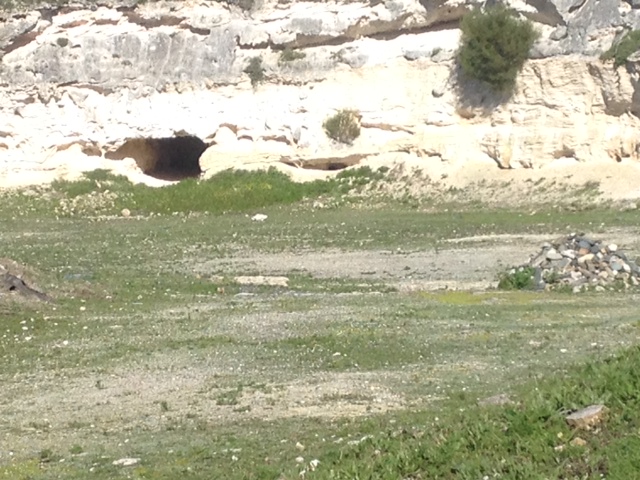
Finally, we were taken to the centrepiece of the tour, the maximum security prison. Our guide explained the ironic thing was that people imprisoned for political reasons were held in this maximum security facility, while those who had committed terrible criminal offenses like rape and murder were held only in the “medium” security facility on the island. After arriving at the facility, our guide turned us over to our maximum security guide. This guide was a former political prisoner who was sent to Robben Island when he was only seventeen. He began our tour in a large cell, which he explained held fifty prisoners, including himself. After his introduction to the prison, he led us through the several rooms, describing the terrible treatment he and his fellow prisoners endured. For example, prisoners were only allowed to send and receive one letter from friends or family every six months, and these letters were often heavily redacted. In addition, they were only allowed one visitor for half an hour each year, and the visitor had to at least be seventeen, meaning many prisoners were not allowed to see their children grow up. Finally, he led us the most famous cell in the prison: the one belonging to Nelson Mandela. The other cells had all of their contents removed, but the museum has recreated what the furnishings looked like when Mandela was held there. It was quite stark, and it was incredible to realize that Mandela was held there for eighteen years. It was also incredible to realize that he wrote and smuggled out most of the material of what would become his memoir, The Long Walk to Freedom, in this tiny cell. After viewing the cell, we were told to take our “short walk to freedom” back to the ferry. We then made the journey back to Cape Town. It was a beautiful ride and view that contrasted starkly with the harshness of the conditions we had just learned about on the island. Although we did not spot any seals for which the island is named (robben means seal in Afrikaans), we did see a whale in the harbor before we disembarked!
Maximum Security Prison

Guard Tower
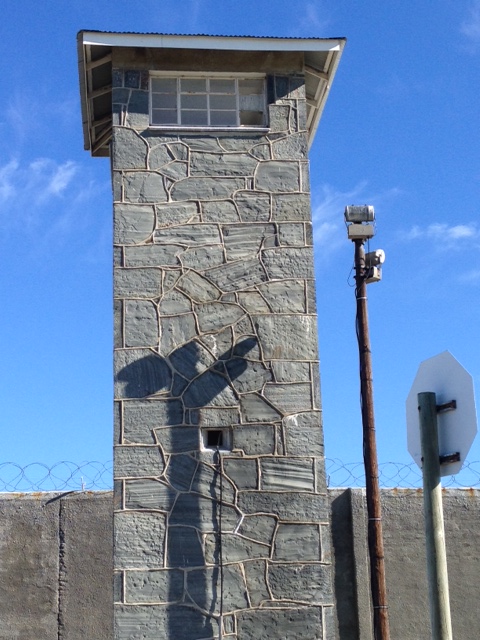
Our Guide in the Large Cell
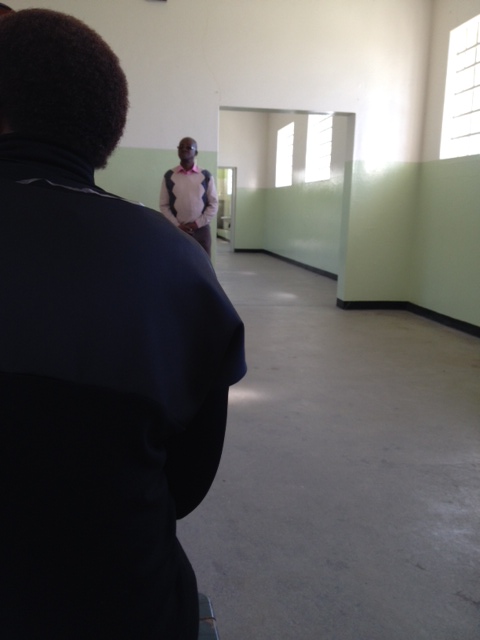
Nelson Mandela's Cell
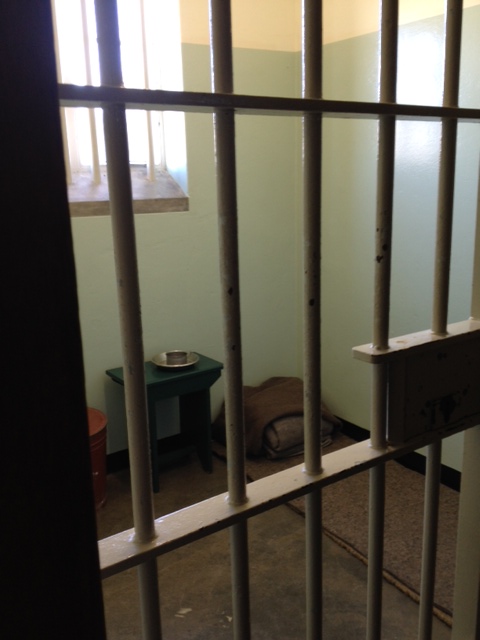
View from Robben Island of Cape Town
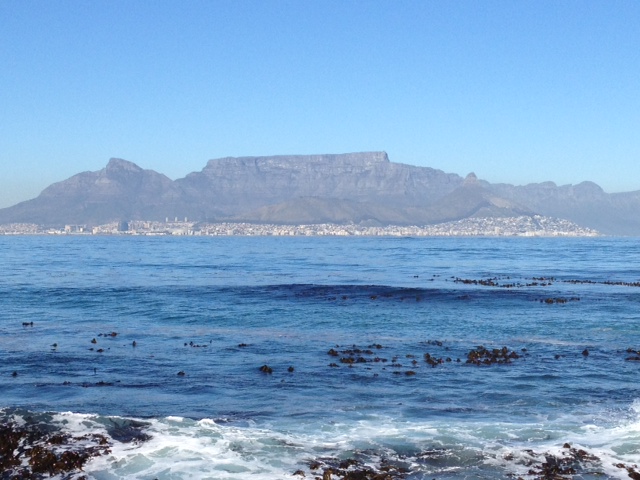
On Sunday, we travelled to Gansbaai to go shark cage diving. We were on a small boat that travelled about forty-five minutes out of the bay to more open waters. There, the crew threw chum, pieces of fish guts and blood, around the boat to attract the great white sharks that inhabit the waters. They also threw a fish head attached to a line as bait. Then, the other passengers, Krishna, and I changed into wetsuits and were lowered into the cage with masks so we could see under water. However, the cage was kept at a level so that we did not need a snorkel or other breathing apparatus but just could bob up and down at the approach of the sharks. Our sharp-eyed guide and other crew members would call out directions as a shark was approaching so we could duck underwater and see it. It is a misconception from the film, “Jaws,” our guide explained, that you can watch the sharks coming because their fin is above water. Rarely does it happen that their fin is above the surface. Additionally, he assured us that the sharks are not interested in humans as food. In fact, he said, you are more likely to die from a vending machine falling on you, than to be attacked by a shark. However, this did not stop me from being very afraid when a shark took the fish head bait right in front of me! I was so startled that I jumped and swam two spots over in the cage. Despite this being startled, we had no violent incidents, and we and all of our fellow cage divers emerged out of the water unscathed. In fact, the only uncomfortable part was the cold water of the Atlantic. It was truly an amazing experience to see these predators up close in their natural habitat. Unfortunately, I do not have any pictures from our actual dive, becausethe salt water would have ruined my camera. However, the experience is not something I feel can be properly captured by a photo anyway. It must be experienced for one’s self.
Gansbaai
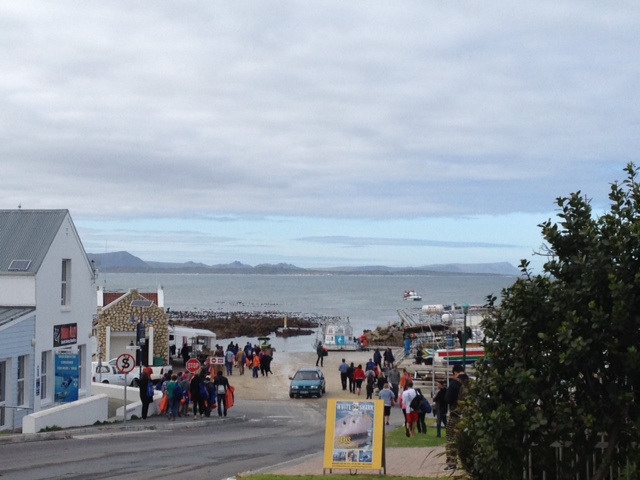
Shark Cage Diving
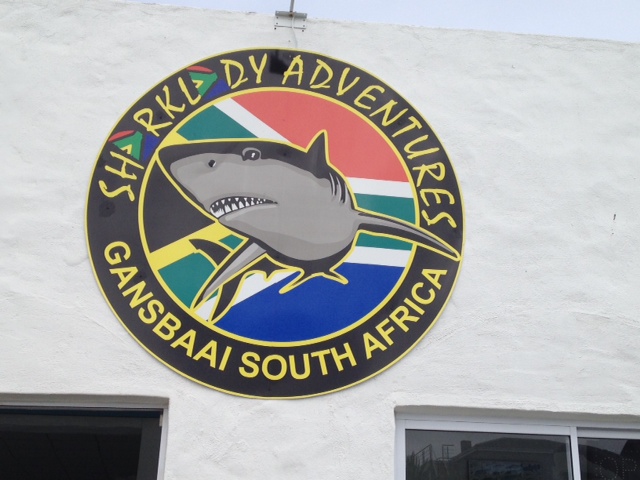
Our Boat
